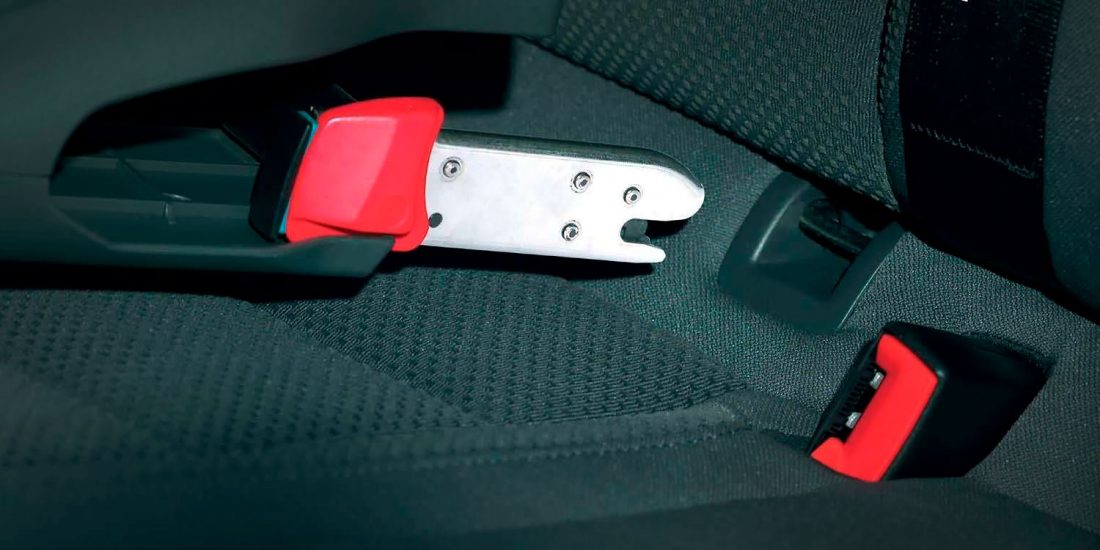
What is ISOFIX child seat mounting system
Content
Any modern car, even a representative of the most budget class, must first of all be safe. To this end, car manufacturers equip all their models with different systems and elements that provide active and passive safety for all passengers in the cabin during the trip. The list of such components includes airbags (for details about their types and work, read here), different stabilization systems of the car during the trip, and so on.
Children are often among the passengers in the car. The legislation of most countries of the world obliges motorists to equip their vehicles with special child seats that ensure safety for babies. The reason is that the standard seat belt is designed to secure an adult, and the baby in this case is not even protected, but on the contrary, is at greater risk. Every year, cases are recorded when a child was injured in light traffic accidents, because his fixation in the chair was made in violation of the requirements.
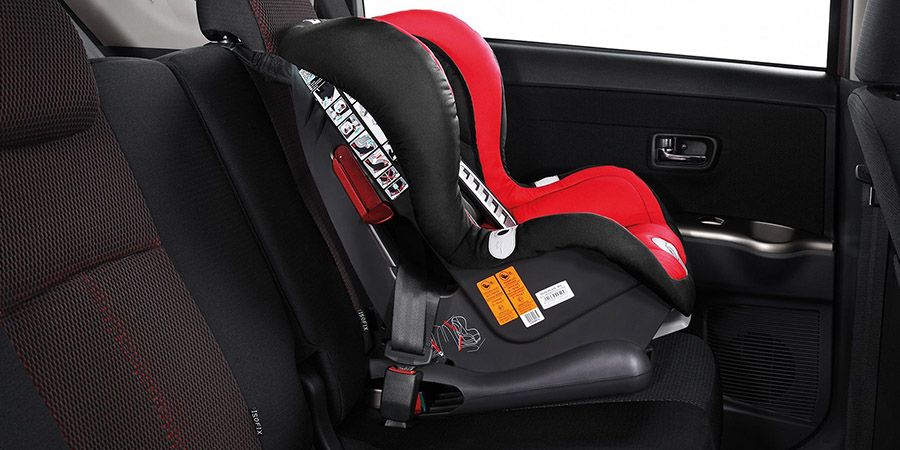
To ensure the safety of children during the trip, various modifications of special car seats have been developed, designed for the comfortable transportation of passengers who have not reached the permitted age or height. But an additional element must not only be purchased, but also installed correctly. Each car seat model has its own mount. One of the most common varieties is the Isofix system.
Let's consider what is the peculiarity of this system, where such a chair should be installed and what are the advantages and disadvantages of this system.
What is Isofix in a car
Isofix is a child car seat fixation system that has become very popular among most motorists. Its peculiarity is that it can be used even if the child seat has a different fixation option. For example, it can have a system:
- Latch;
- V-tether;
- X-fix;
- Top-Tether;
- Seatfix.
Despite this versatility, the Isofix type retainer has its own characteristics. But before we look at them, it is necessary to find out how the clips for child car seats came about.
Back in the early 1990s, the ISO organization (which defines different standards, including for all kinds of car systems) created a unified standard for fixing Isofix-type car seats for children. In 1995, this standard was specified in the ECE R-44 regulations. A year later, in accordance with these standards, every European automaker or company that produces cars for export to Europe was required to make specific changes to the design of their models. In particular, the body of the car must provide a fixed stop and fixation of a bracket to which a child seat can be connected.

Prior to this ISO FIX (or fixation standard) standard, each car manufacturer had developed different systems to fit a child seat over a standard seat. Because of this, it was difficult for car owners to find the original in car dealerships, since there was a wide variety of modifications. In fact, Isofix is a uniform standard for all child seats.
Isofix mount location in the vehicle
The mount of this type, in accordance with European standards, must be located in the place where the backrest smoothly goes into the back row seat cushion. Why exactly the back row? It is very simple - in this case, the child lock is much easier to rigidly fasten to the car body. Despite this, in some cars, manufacturers offer customers their products with Isofix brackets also in the front seat, but this does not fully comply with the European standard, since this system must be attached to the car body, and not to the structure of the main seat.
Visually, the mount looks like two brackets rigidly fixed in the lower part behind the back of the rear sofa. The mounting width is standard for all car seats. A retractable bracket is attached to the bracket, which is available on most models of child seats with this system. This element is indicated by the inscription of the same name, above which there is a child's cradle. Often these brackets are hidden, but in this case, the automaker uses special branded labels sewn to the seat upholstery in the place where the installation is to be made, or small plugs.
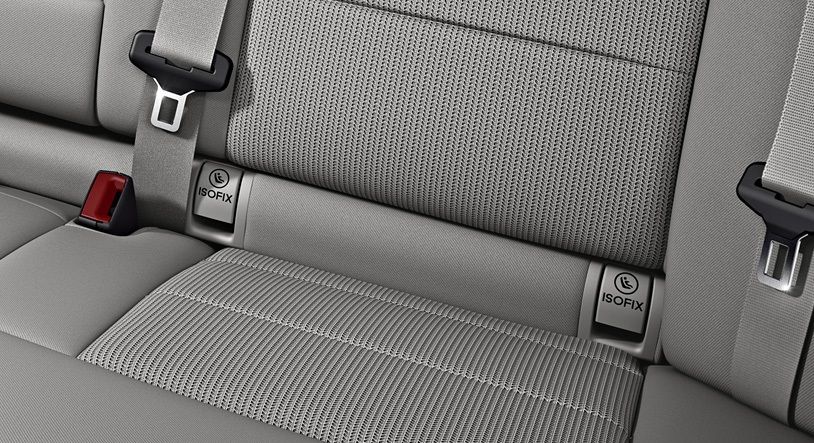
The hitching bracket and seat bracket can be between the cushion and the back of the rear sofa (deep in the opening). But there are also open installation types. The manufacturer informs the car owner about the presence of a hidden attachment of the type in question with the help of a special inscription and drawings that can be made on the seat upholstery in the place where the installation is to be carried out.
Since 2011, this equipment has been mandatory for all vehicles operated in the European Union. Even the latest models of the VAZ brand are also equipped with a similar system. Many models of cars of the latest generations are offered to buyers with different trim levels, but in most of them the base already implies the presence of mounts for child car seats.
What if you haven't found Isofix mounts in your car?
Some motorists are faced with a similar situation. For example, on the back sofa it may be indicated that a child seat can be connected in this place, but it is not possible to find the bracket either visually or by touch. This may be, just the car interior may have standard upholstery, but in this configuration, the mount is not provided. To install these clips, you need to contact the dealer center and order Isofix mount. Since the system is widespread, delivery and installation is fast.
But if the manufacturer does not provide for the installation of the Isofix system, then it will not be possible to do this independently without interfering with the design of the car. For this reason, in such situations, it is better to install an analogue that uses standard seat belts and other additional elements that ensure the safe operation of the child car seat.
Features of the use of Isofix by age group
The child car seat for each individual age group has its own characteristics. Moreover, the differences between the options are not only in the design of the frame, but also in the method of fastening. In some cases, only the standard seat belt is used, with which the seat itself is fixed. The child is held in it by an additional belt included in the design of the device.

There are also modifications with a latch on the bracket. It provides a firm hitch to each brace under the seat back. Some options are equipped with additional clamps such as an emphasis on the floor of the passenger compartment or an anchor that secures the side of the seat opposite to the bracket. We'll look at these modifications a bit later and why they are needed.
Groups "0", "0+", "1"
Each category of braces must be able to support a specific weight of the child. Moreover, this is a fundamental parameter. The reason is that when an impact occurs, the seat anchorage has to withstand a tremendous amount of stress. Due to the inertial force, the passenger's weight always increases significantly, so the lock must be reliable.
The Isofix group 0, 0+ and 1 is designed for transporting a child weighing less than 18 kilograms. But each of them also has its own limitations. So, if a child weighs about 15 kg, a chair from group 1 (from 9 to 18 kilograms) is required for him. Products included in category 0+ are intended for transporting children weighing up to 13 kilograms.
Car seat groups 0 and 0+ are designed to be installed against the movement of the car. They do not have Isofix clamps. For this, a special base is used, in the design of which there are suitable fasteners. To secure the carrycot, you must use the standard seat belts. The sequence for installing the product is indicated in the instruction manual for each model. The base itself is rigidly fixed, and the cradle is dismantled from its own Isofix mount. On the one hand, it is convenient - you do not need to fix it on the back sofa every time, but this model is quite expensive. Another disadvantage is that in most cases the base is not compatible with other seat modifications.

Models in group 1 are equipped with the corresponding Isofix brackets, which are fixed on the brackets intended for this purpose. The bracket is mounted in the base of the child seat, but there are models equipped with their own removable base.
Another modification is a combined version that combines positions for kids of groups 0+ and 1. Such chairs can be installed both in the direction of the car and against. In this case, a swivel bowl is available to change the position of the child.
Groups "2", "3"
Child car seats belonging to this group are designed to transport babies from three years of age and older, whose weight reaches a maximum of 36 kilograms. The Isofix fastening in such seats is often used as an additional fixator. In "pure form" Isofix for such chairs does not exist. Rather, on its basis, there are its modernized counterparts. Here are just a few examples of what manufacturers call these systems:
- Kidfix;
- Smartfixes;
- Isofit.
Since the weight of the child is more than a conventional bracket can withstand, such systems are equipped with additional locks to prevent the free movement of the seat around the cabin.
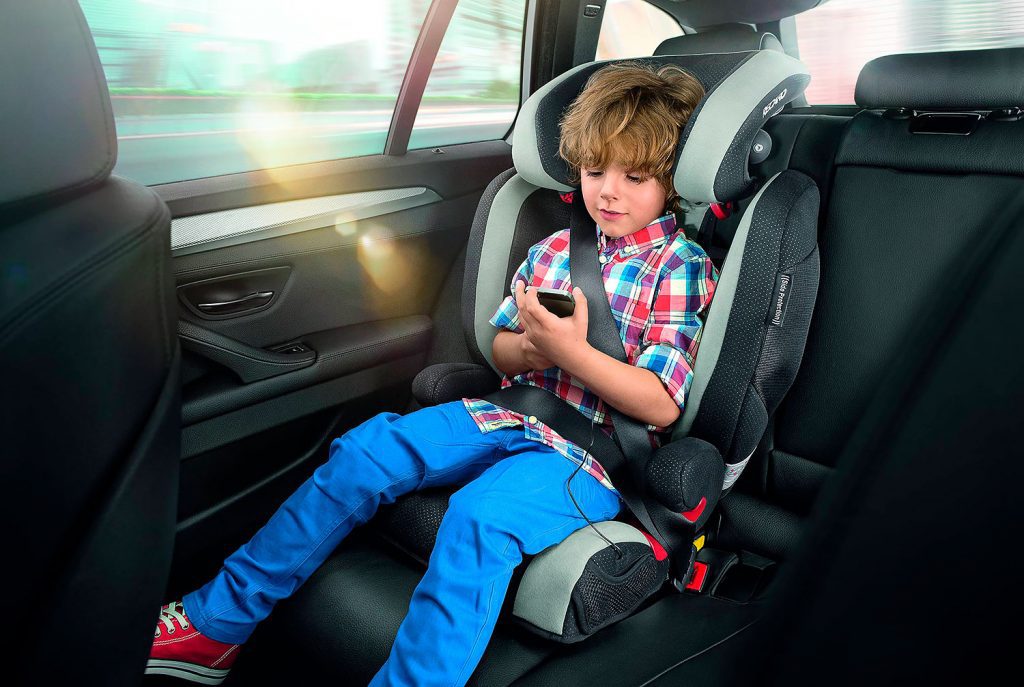
In such designs, three-point belts are used, and the chair itself is able to move slightly so that the belt lock is triggered by the movement of the chair, and not the child in it. Given this feature, such types of chairs cannot be used with an anchor type of fixation or an emphasis on the floor.
Anchor strap and telescopic stop
The standard child seat is fixed in two places on the same axis. As a result, this part of the structure in a collision (more often a front impact, since at this moment the seat sharply strives to fly forward) is subjected to a critical load. This could cause the chair to tilt forward and break the bracket or bracket.
For this reason, manufacturers of child car seats have provided models with a third pivot point. This can be a telescopic footboard or an anchor strap. Let's consider what is the peculiarity of each of these modifications.
As the name implies, the support design provides for a telescopic footboard that can be adjusted in height. Thanks to this, the device can be adapted to any vehicle. On the one hand, the telescopic tube (hollow type, consisting of two tubes inserted into each other and a spring-loaded retainer) abuts against the passenger compartment floor, and on the other, it is attached to the base of the seat at an additional point. This stop reduces the load on the brackets and brackets at the time of a collision.

The anchor-type belt is an additional element that is attached to the upper part of the back of the child seat, and on the other side with a carabiner or to a special bracket located in the trunk or on the back of the main back of the sofa. Fixing the upper part of the car seat prevents the entire structure from nodding sharply, which can cause the baby to injure the neck. The head restraints on the backrests provide protection against whiplash, but they must be adjusted correctly. Read more about this. in another article.
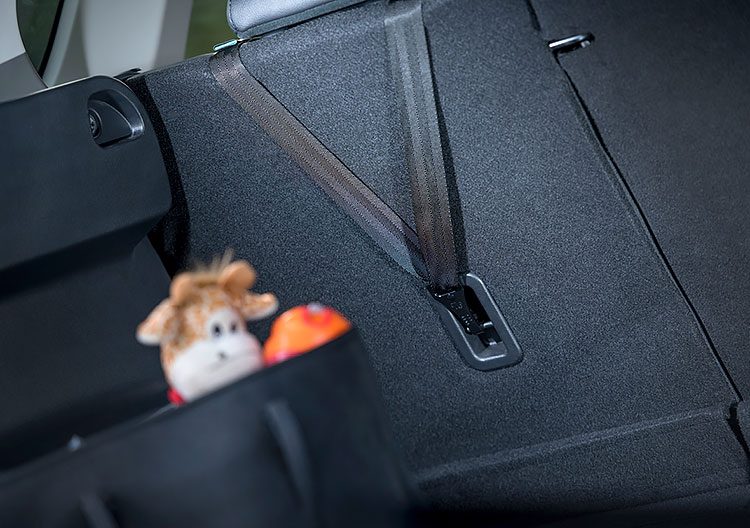
Of the varieties of isofix child car seats, there are options for which operation is permitted without a third anchor point. In this case, the device bracket is able to move slightly, thereby compensating for the load at the time of an accident. The peculiarity of these models is that they are not universal. When choosing a new seat, you need to check with the specialists whether it is suitable for a particular car. In addition, how to correctly install a child car seat is described in another review.
Isofix mounts analogs
As stated earlier, the isofix mount meets the general standard for securing child car seats that went into effect back in the 90s. Despite its versatility, this system has several analogues. One of them is the American development Latch. Structurally, these are the same brackets attached to the car body. Only chairs with this system are not equipped with a bracket, but with short belts, at the ends of which there are special carabiners. With the help of these carabiners, the chair is fixed to the brackets.
The only difference between this option is that it does not have a rigid coupling with the car body, as is the case with isofix. At the same time, this factor is a key disadvantage of this type of device. The problem is that as a result of an accident, the child must be securely fixed in place. The Latch system does not provide this opportunity, as a flexible belt is used instead of a strong bracket. Because of the free movement of the seat in the passenger compartment, a child is more likely to be injured in a side collision.
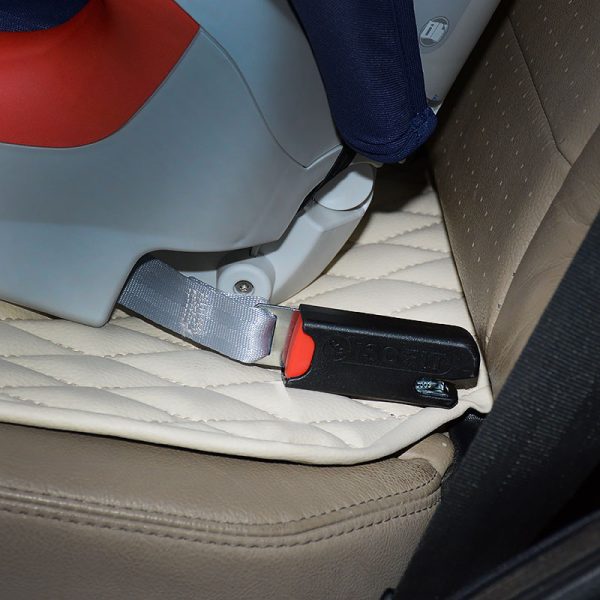
If the car has a minor accident, then the free movement of the fixed child car seat compensates for the acceleration load, and during operation the device is more convenient than analogues with the Isofix system.
Another analogue compatible with brackets designed for connecting chairs to isofix brackets is the American Canfix or UAS system. These car seats are also attached to brackets under the back of the sofa, only they are not so rigidly fixed.
What is the safest place in the car?
It is impossible to correct errors in the operation of car seats for children. Often the driver's negligence in this regard leads to tragic accidents. For this reason, every motorist who drives a child in his car should be extremely careful about what devices he uses. But the location of the car seat is just as important.
Although there is no hard and fast rule among specialists on this matter, before most of them agreed that the safest place was behind the driver. This was due to the instinct of self-preservation. When a driver finds himself in an emergency, he often steers the car to stay alive.
The most dangerous place in the car, in accordance with the research of the foreign company Pediatrics, is the front passenger seat. This conclusion was made after a study of road accidents of varying severity, as a result of which more than 50 percent of children were injured or died, which could have been avoided if the child had been in the back seat. The main reason for many injuries was not so much the collision itself, but the deployment of the airbag. If the infant car seat is installed on the front passenger seat, it is necessary to deactivate the corresponding pillow, which is not possible in some car models.
Recently, researchers from New York State at America's leading university conducted a similar study. As a result of a three-year analysis, the following conclusion was made. If we compare the front passenger seat with the rear sofa, then the second-row seats were 60-86 percent safer. But the central place was almost a quarter safer than the side seats. The reason is that in this case the child is protected from side impacts.
Pros and cons of Isofix mount
Definitely, if it is planned to carry a small passenger in the car, the driver is obliged to take care of his safety. This adult can instinctively put his hands forward, dodge or grab the handle, and even then, in emergency cases, it is not always possible to protect himself. A small child does not have such a reaction and strength to stay in place. For these reasons, the need to purchase child car seats must be taken seriously.
The isofix system has the following advantages:
- The bracket in the child seat and the bracket on the body of the car provide a rigid coupling, due to which the structure is almost monolithic, like a regular seat;
- Attaching the mounts is intuitive;
- A side impact does not provoke the seat to move around the cabin;
- Complies with modern vehicle safety requirements.
Despite these advantages, this system has small disadvantages (they cannot be called disadvantages, since this is not a flaw in the system, because of which one would have to choose an analogue):
- Compared to other systems, such chairs are more expensive (the range depends on the type of construction);
- Cannot be installed on a machine that does not have mounting brackets;
- Some car models are designed for a different fixing system, which may not meet Isofix standards in terms of the fixing method.
So, if the design of the car provides for the installation of an Isofix child seat, then it is necessary to purchase the modification that is compatible with the position of the brackets on the body. If it is possible to use an anchor type of seats, it is better to use it, as it is more securely fixed.
When choosing a chair model, you need to make sure that it will be compatible with a specific car brand. Since children grow up quickly, from a practical point of view, it is better to provide for the possibility of installing universal modifications or using different categories of seats. Safety on the road, and especially of your passengers, is much more important than getting to your destination on time.
In conclusion, we offer a short video on how to install child seats with the Isofix system:
Questions and answers:
Which fastening is better than isofix or straps? Isofix is better because it prevents uncontrolled movement of the chair during an accident. With its help, the chair is installed much faster.
What is isofix car mount? This is a fastener with which the child car seat is securely fixed. The existence of this type of attachment is evidenced by special labels at the installation site.
How to install isofix in a car? If the manufacturer has not provided for it in the car, intervention in the design of the car will be required (the fastening brackets are welded directly to the body part of the car).